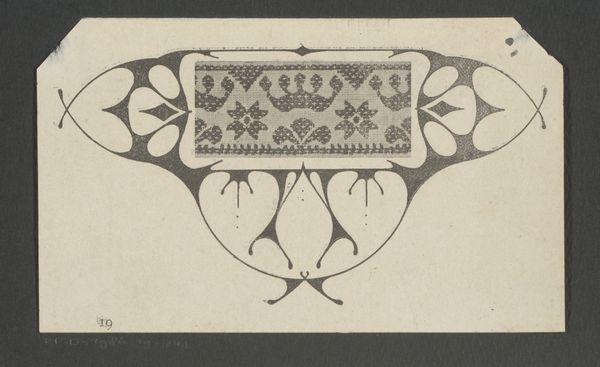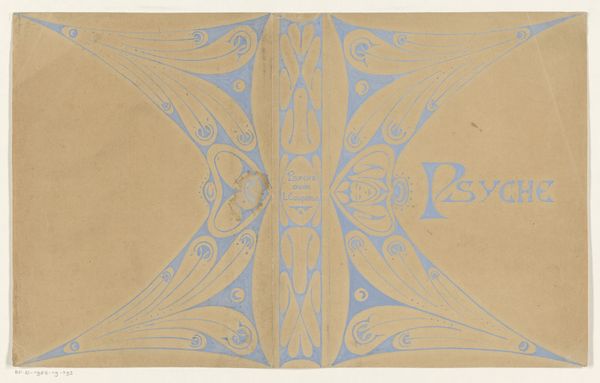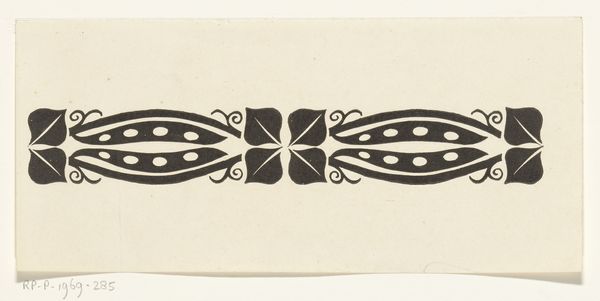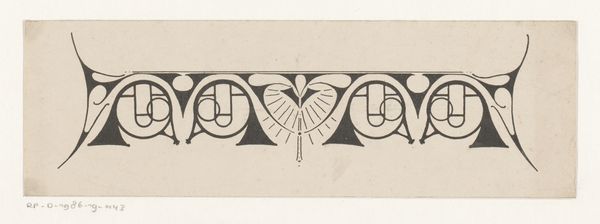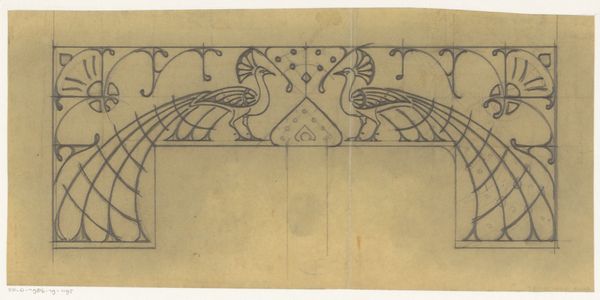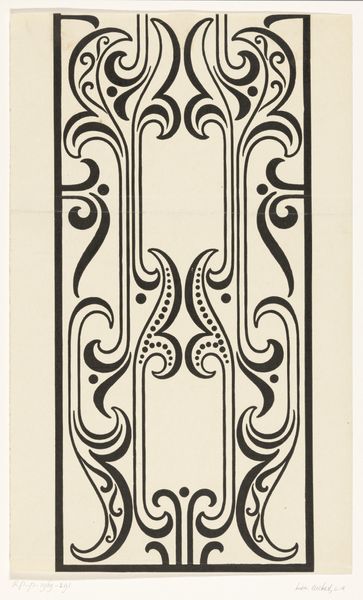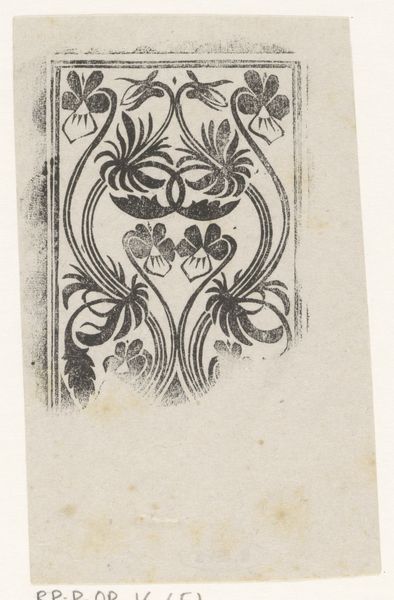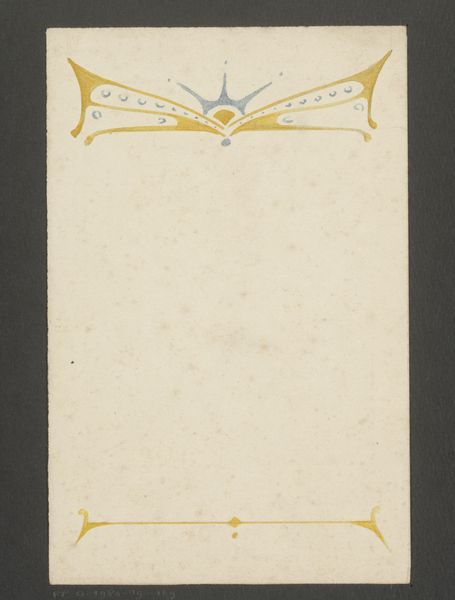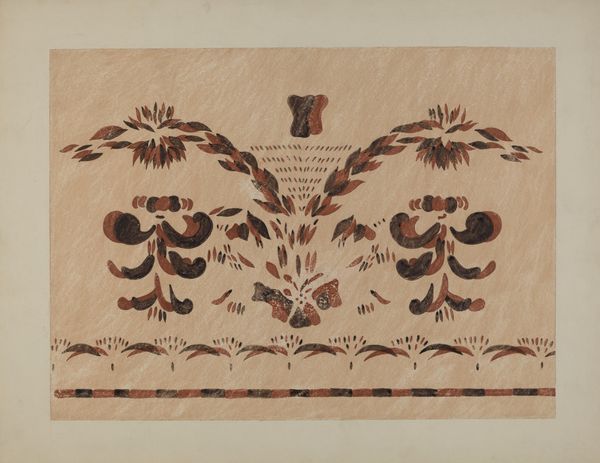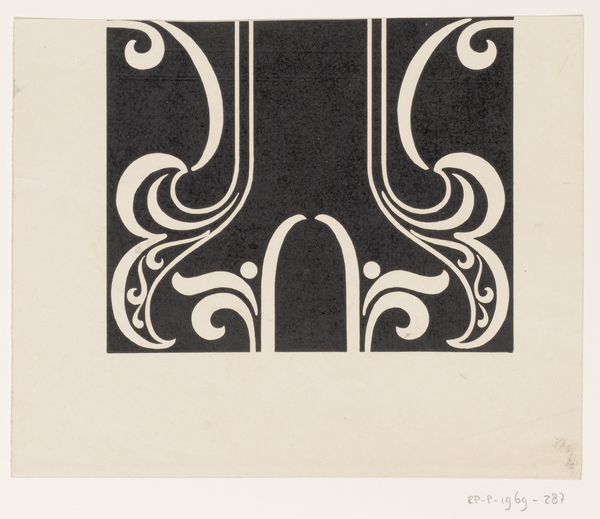
Bandontwerp voor: Louis Couperus, Noodlot, 1898 before 1898
0:00
0:00
drawing, graphic-art, poster
#
drawing
#
graphic-art
#
art-nouveau
#
geometric
#
decorative-art
#
poster
Dimensions: height 210 mm, width 341 mm
Copyright: Rijks Museum: Open Domain
Editor: This drawing is a book cover design, ‘Bandontwerp voor: Louis Couperus, Noodlot,’ made before 1898, by Reinier Willem Petrus de Vries. I notice the symmetry and repeating floral patterns, the overall feel is decorative, but the word "Noodlot," meaning "fate" or "destiny," feels ominous in contrast. How do you interpret this design? Curator: I see an intriguing visual negotiation between the aesthetics of Art Nouveau and the weight of its symbolic content. Notice how the stylized floral motifs, typical of Art Nouveau, almost seem to entrap or frame the word "Noodlot." Editor: Entrap? That’s an interesting word choice. Curator: Think about it. The curvilinear lines, while beautiful, constrict the text. Consider too, the vertical elements, almost resembling an hourglass shape that bracket the flower petals. Time becomes a central element – we're reminded of the temporal, the finite, the ever-closing window of opportunity or agency, battling to overcome 'fate'. Editor: That connection to an hourglass didn't occur to me! The piece seems to suggest a tension then between free will and predetermined destiny. Curator: Precisely. These repeated motifs could function as cultural shorthands; potent and persuasive images designed to condition the viewers' subconscious to deeper messages within. The patterns give us visual pleasure, even as the meaning of "Noodlot" unsettles us. De Vries creates a sophisticated interplay here, asking us, perhaps, whether aesthetic beauty can mask, or even reinforce, deeper anxieties. Editor: So much is conveyed through such simple lines and shapes. It gives me a fresh perspective when I look at the drawing. Thanks for unpacking it. Curator: My pleasure. It serves as a great reminder of how artists often embedded rich psychological narratives within decorative forms.
Comments
No comments
Be the first to comment and join the conversation on the ultimate creative platform.
